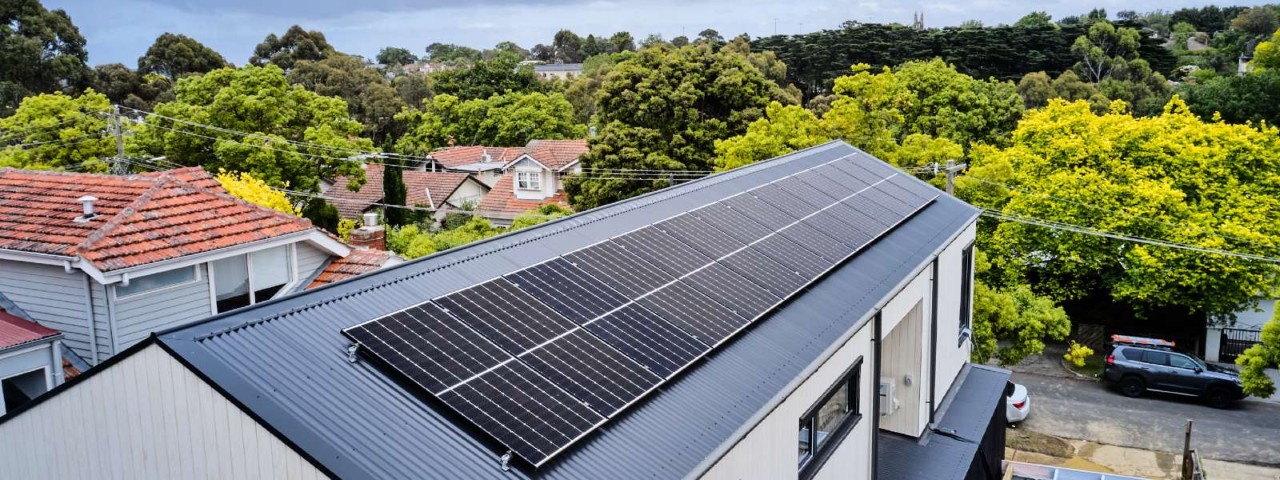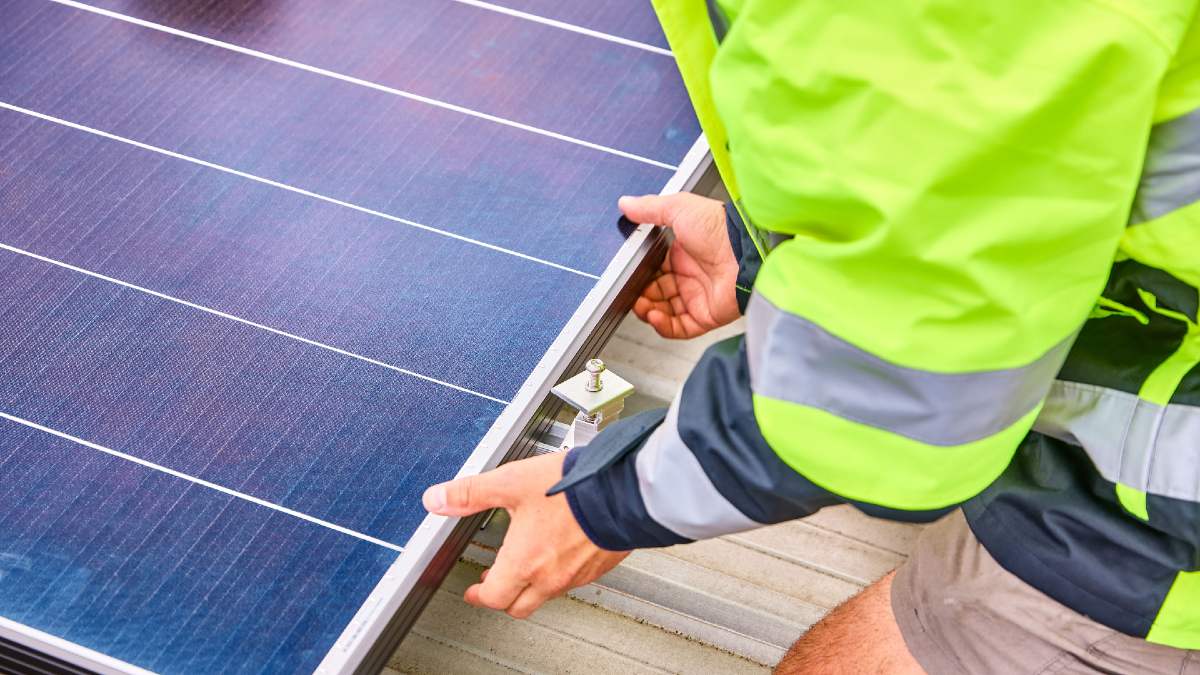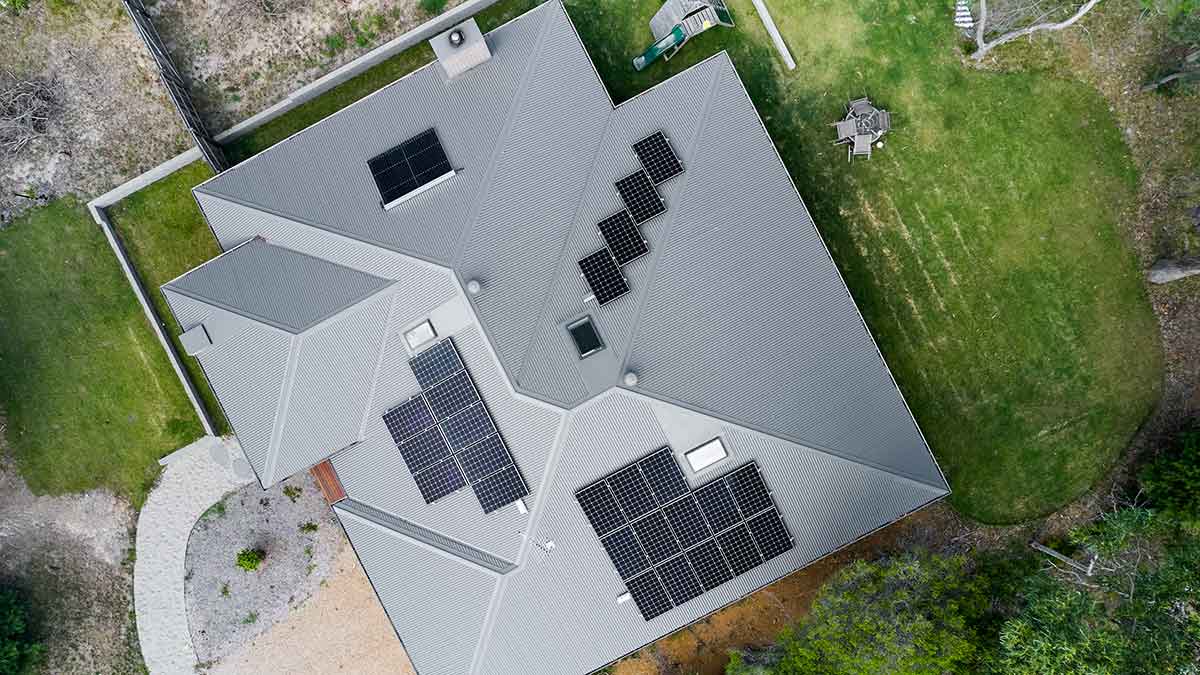Interested in solar energy but worried about the upkeep? Check out our handy FAQ guide on how to maintain your solar system.
What is a solar feed-in tariff and how to compare rates in Victoria

As more Victorians adopt rooftop solar to reduce energy expenses, it's important to understand how solar feed-in tariffs operate to maximise the benefits. So, what exactly is a solar feed-in tariff, and how can it help lower your power bills?
Australia is a global leader in solar power. The Clean Energy Council reports that rooftop solar generated 12.4 per cent of Australia’s total electricity supply in 2024, with an estimated four million households having installed rooftop solar.
As more Australians embrace rooftop solar panels and solar batteries, understanding how solar tariffs work is essential to making the most of an investment in rooftop solar panels.
Whether you’ve recently installed a solar power system or are considering one, here’s what you need to know about the solar feed-in tariff (FiT) - sometimes known as a solar buy-back scheme or solar bonus scheme.
Going solar? Here's what you need to know
- Solar panel and battery rebates available in Victoria
- What does an inverter do in a solar power system?
- How to safely clean solar panels
- Do solar panels work in winter?
- Can you use solar power at night?
- How do solar batteries work and worth it?
- What to consider when upgrading your solar power system
Solar feed-in tariffs explained
What is a solar feed-in tariff?
Sometimes your solar system will produce more solar electricity than your household can consume. If you don’t choose to store excess energy in a solar battery, it can be sent into the energy grid.
A solar feed-in tariff (FiT) is the payment from your electricity retailer for this excess solar electricity fed back to the grid. The payment is made in cents per exported kilowatt-hour (c/kWh) and usually appears as a credit on your electricity bill.
There are two common types of feed-in tariffs in Australia:
- Single-rate feed-in tariff - a flat rate paid for all exported solar energy, regardless of the time of day
- Time-varying feed-in tariff - a varying rate that depends on the time the energy is exported; often higher during peak demand periods and lower during off-peak times.
Although feed-in tariffs have decreased over the past decade as solar uptake has grown, they still contribute valuable savings to households.

Solar feed-in tariffs may allow you to sell excess power back to the grid. Image: Matt Harvey
Why has the solar feed-in tariff decreased?
The solar feed-in tariff decreased because wholesale electricity prices have decreased. In fact, the Victorian Department of Energy, Environment and Climate Action (DEECA) reports that Victoria has the lowest wholesale electricity prices across Australia.
In addition, as the number of households with solar panels has increased, so too has the amount of power going back into the grid during the day – when demand is usually lower. This means the value of solar exports is now lower.
What is the minimum solar feed-in tariff?
The minimum solar feed-in tariff was a set minimum amount that electricity retailers could pay households for exporting their solar electricity into the grid. Retailers could, and often did, pay more than this amount.
In Victoria, from 1 July 2025 the Essential Services Commission (ESC) will no longer set minimum feed-in tariffs. This is due to an amendment to the Electricity Industry Act 2000. Electricity retailers may now set their own feed-in tariffs.
What is the premium feed-in tariff scheme?
Victoria's premium feed-in tariff (PFiT) scheme ended on 1 November 2024. Under this scheme, eligible households were paid 60 cents for every excess kilowatt hour of energy fed back into the state electricity grid.
If you were on the PFiT scheme, you may have an older or relatively small solar system. A new solar system may benefit your household, since it will be in line with the latest technology and better matched to your current energy needs.

Rooftop solar panels can generate a lot of energy. Image: Matt Harvey
How do solar tariffs affect your energy bill?
Solar tariffs can reduce your energy bill in two key ways:
- Reducing how much power you buy from the grid. Using your own solar-generated electricity means you're not paying the full retail price (typically 25–35 cents per kWh).
- Earning credits for exported power. Surplus solar generation earns feed-in tariff credits, offsetting your electricity costs.
With FiTs often much lower than grid electricity rates, self-consumption of solar energy is the most financially beneficial strategy. In other words, it's better to use your solar power than to export it. It's also a reason to consider installing a solar battery as a way of storing energy produced during the day for use at night.
How do you receive a solar feed-in tariff?
Each retailer or network area has their own conditions and network requirements which will determine the maximum amount of electricity you are allowed to send back to the grid. Typically a pre-approval process is carried out before installation to determine the amount.
After your system is installed, an application is submitted to your electricity retailer for a solar feed-in tariff to be applied to your electricity bill. Each application is specific to the property in which the solar has been installed.
Energy retailers offer different packages and terms and conditions, so it's important to shop around. Check out Arcline by RACV for competitve solar feed-in tariffs.

You can store excess solar power in a solar battery. Image: Matt Harvey
How to maximise solar tariff benefits
The best use of your excess solar power is running major appliances like dishwashers, washing machines and dryers during the day - especially on sunny days, when your solar system will be performing best.
You could also consider installing a solar battery. In fact, it may be financially better to store excess electricity in a solar battery rather than feeding that energy back to the grid. A solar battery can store your excess electricity generated from your solar panels during the day. You can then use solar-produced energy at night, or to supplement your energy demands if they outstrip what your solar panels can supply during the day.
If you own an electric vehicle (EV), it may also be worth installing an EV home charger. This form of charging is highly convenient, cost effective and much faster and more efficient than plugging the EV into a regular household power point. It's a great use of excess solar energy.
Contact the expert consultants at RACV Solar to discuss your options to install or upgrade solar systems and solar batteries.


